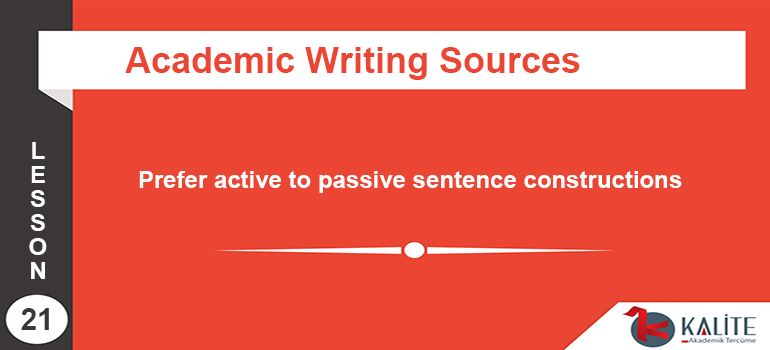
Prefer active to passive sentence constructions
Where possible, you should prefer active sentence constructions over passive ones.
Let’s briefly compare:
Active: “The dog bites the bone.”
Passive (a): “The bone is bitten.”
Passive (b): “The bone is bitten by the dog.”
In the active construction, the subject of the sentence (i.e. thing doing the action: the dog) leads the sentence, whereas in the passive construction, the object (i.e. the thing receiving the action: the bone) leads the sentence.
Additionally, in the passive the subject does not need to appear (the dog does not need to appear in the sentence at all – as in Passive [a]).
The passive tends to be more obscure because the subject is easily suppressed, but it also tends to be more convoluted because the passive voice adds a verb (notice the addition ofis above) and changes the form of the main verb (bit transforms into bitten).
Scientific writers sometimes like to avoid personal pronouns, so when they discuss things they’ve done, they sometimes prefer passive constructions.
Passive constructions do have their uses, so you don’t need to boycott them, but prefer the active where it’s easy to do so.


